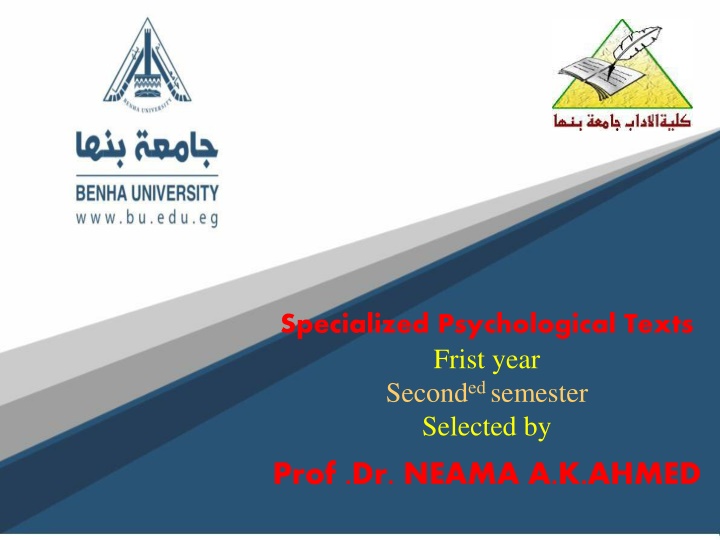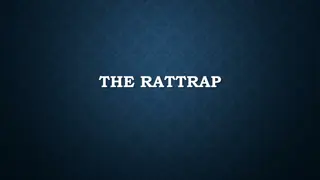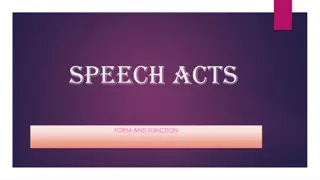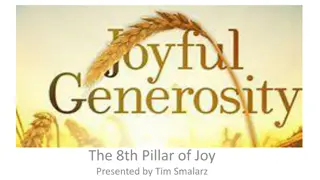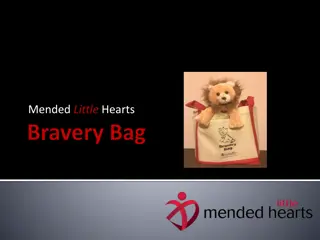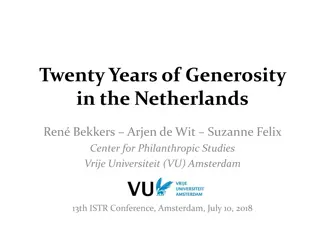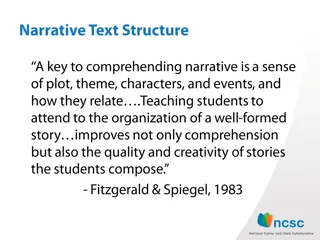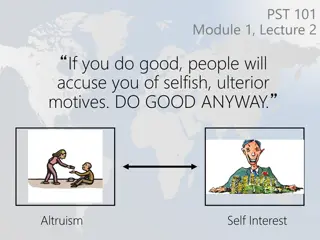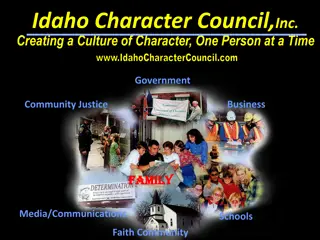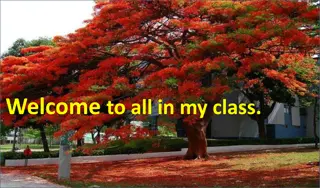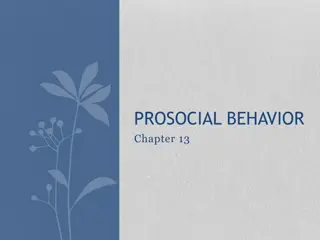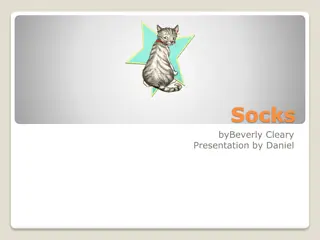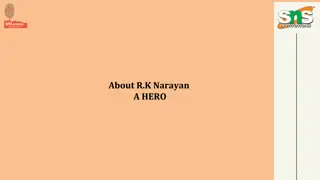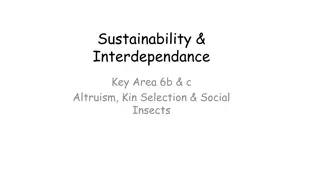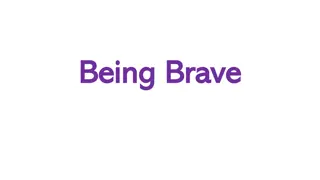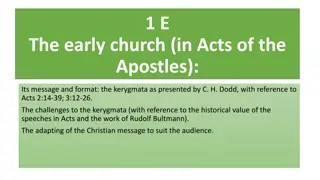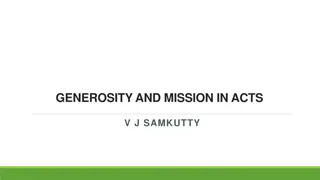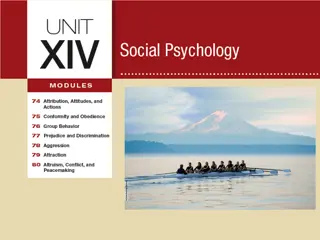Acts of Altruism: A Heartwarming Tale of Bravery and Generosity
In a heartwarming act of altruism, 11-year-old Timothy Diakis bravely saved his elderly neighbor from a burning building, risking his own life in the process. Despite facing flames and unconsciousness, Timothy's selfless actions inspired generosity from strangers, highlighting the contrast between acts of kindness and public apathy in society. This compelling narrative raises questions about human behavior in times of need.
Download Presentation

Please find below an Image/Link to download the presentation.
The content on the website is provided AS IS for your information and personal use only. It may not be sold, licensed, or shared on other websites without obtaining consent from the author.If you encounter any issues during the download, it is possible that the publisher has removed the file from their server.
You are allowed to download the files provided on this website for personal or commercial use, subject to the condition that they are used lawfully. All files are the property of their respective owners.
The content on the website is provided AS IS for your information and personal use only. It may not be sold, licensed, or shared on other websites without obtaining consent from the author.
E N D
Presentation Transcript
Specialized Psychological Texts Frist year Seconded semester Selected by Prof .Dr. NEAMA A.K.AHMED
On January 21, 1984; 11-year-old Timothy Diakis ran to the burning apartment next door to rescue his 83-year-old neighbor; Awakened from sleep and clad only in his underwear, the young boy crawled on his hands and knees through the smoke-filled-apartment to reach the bedroom where the woman he called "Grandma" was trapped. He pulled her to the floor where a few pockets of air-remained, and then tried desperately to lead her to safety
As they made their way toward the exit, they faced flames creeping Overcome by smoke at last, Timothy and Sarah Sherman lapsed into unconsciousness just as fire engines arrived. Firefighters wearing protective masks and clothing ultimately rescued both and rushed them to a nearby hospital. Sarah suffered minor injuries, but Timothy spent months in the hospital undergoing skin grafts for severe burns down the hallway.
Firefighters say Sarah would have died had the youngster not rushed-in and dragged her at least part way to safety. When newspaper accounts of the story reported that the family had no medical insurance, readers moved by the boy's altruisrn sent more than $50,000 in donations to help pay his expensive medical bills.
Acts of altruism and public generosity such as this stand in stark contrast to stories of public apathy to the plight of victims. In Chapter 1 we recounted the tragic story of' Kitty Genovese, a young woman stabbed to death on a city street while at least 386 people watched and did nothing. There are countless stories of this sort. People are beaten, raped, robbed, and killed while those who could give assistance stand by Clearly, humans are capable of helping or ignoring others in distress. Why do people sometimes help another? And why, sometimes, do they fail to give badly needed assistance?
Before trying to answer this question, let us be clear about what we mean by altruism and prosocial Altruism refers to an act performed voluntarily to help someone else when there is no expectation of receiving a reward in any form (except perhaps a feeling of having done a good deed) behavior.
By this definition, whether or not an act is altruistic depends on the intentions of the helper. The stranger who risks his own life to pull a victim from a burning car and then vanishes anonymously into the night has performed an altruistic act.
Prosocial broader includes any act that helps or is designed to help others, regardless of the helper's motives. Many prosocial behavior are not altruistic behavior category: is a It types of
For example, if you give a hefty contribution to your boss's favorite charity in the hope of making a favorable impression and getting a raise, you are not acting altruistically in the pure sense. Prosocial behavior ranges over a continuum from the most selfless acts of altruism to helpful acts motivated entirely by self-interest (Rushton, 1980). We will focus on the altruistic end of the scale situations where the immediate rewards for helping are minimal.
Our understanding of altruistic behavior has benefitted from three broad theoretical perspectives. Some emphasized the historical roots of this behavior. Sociobiologists propose that a predisposition to help has become part of our genetic, evolutionary contrasting historical view is that rules about helping others developed as part of the history of human civilization theorists have heritage. A in need have
A second approach proposes that helping is affected sometimes subtly, by basic principles of reinforcement and modeling. The third perspective, decision-making, processes that judgments about when help is needed. It also emphasizes the weighing of costs and benefits in the decision, to give help. focuses influence on the our
Prosocial behavior is not an invention of the twentieth century.. Two contrasting analyses of historical forces that may have encouraged altruism sociobiology and socia1 evolution. SOCIOBIOLOCY observed prosocial animal species. Charles Darwin (1871) noted that rabbits will make noise with their hind feet to warn other rabbits of predators are offered by Scientists have long behavior among
In termite hives, the soldier termites will defend a nest against an intruder by putting themselves in front of the other termites and exposing themselves to danger (Wilson, 1971). Many soldiers die so that others may live and the nest survive. Some varieties of baboon have a characteristic pattern of responding to threats (Hall, 1960). The dominant males take the most exposed positions, and may even rush at an intruder. As the tribe moves away from the threat, the males risk their own safety by remaining to protect the rest of the group
Dolphins show a fascinating pattern of rescuing injured peer's. Since dolphins are mammals, they must breathe air to survive: If an injured animal sink below the surface, it will die. Several observers have reported that dolphins will companion. In one case (Sicbenaler & Caldwell; 1956, a dolphin was stunned by an explosion in the Water. Two other adults came to its aid by holding the animal afloat until it recovered and was able to care for itself. aid an injured
Among sacrifice themselves when their young are threatened. An impressive example is the female nighthawk, which responds to a potential attack on her young by flying from the nest as if she had a broken wing fluttering around at a low level, and finally landing on the ground right in front of the intruder but away (Armstrong, 1965; Gramza, 1967). many animals, parents will from the nest
This portrait of animals helping and sacrificing for each other runs counter to the dog-eat-dog, survival of the fittest image that some people have of the animal kingdom. Indeed, the existence of altruism has posed a problem for evolutionary theorists: if the most helpful members of an animal species sacrifice themselves for others, they will be less likely to survive and pass along their genes to the next generation by having offspring. How then does a biological predisposition to act altruistically persist among (Hoffman, 1981)? animals or humans
To understand the paradox, we need to review some sociobiology. This relatively new field uses evolutionary theory to explain social behavior in genetically determined trait that has high survival value (that helps the individual survive) will tend to be passed on. basic ideas in animals. Any
This happens because the individual with the trait is more likely to survive than one without the trait and so produces more off-spring, each of whom will tend to have the trait and will in turn be more likely to survive and reproduce, Eventually, individuals with genes that carry this trait will grow more numerous than those without those genes, and will come to dominate the species. and so on.
Giraffes with genes that give them longer necks are better able to reach scarce food; they produce more young giraffes than those who have shorter necks. After many generations, we have giraffes with very long necks. However, necks that are too long are awkward; these animals tend to die out. The species thus comes to be dominated by animals whose necks are just long enough for them to reach the food
Of course, this process takes many generations, and sometimes the environment changes meantime and a trait that was useful at one time becomes less useful later. But the principle that useful characteristics less useful ones generally holds. in the dominate
This principle is easy to understand when it involves individual survival. Obviously, if an animal lives longer and is healthier, it will produce more healthy young and its genes will be carried on. Sociobiologists such as Edmund Wilson (1975) suggest that the same principle can also apply when the particular individual's own survival is threatened by its genetically determined behavior.
In the case of altruism, the tendency to help others has high survival individual's genes, but not necessarily for the individual. Imagine a bird that has fathered six chicks. Half of the genes in each chick come from the father. Together, the six chicks have three times as many of the father's genes as he does himself. If the father sacrifices himself to save the chicks, his particular gene pool is still ahead of the game. Similar analyses can be done for other relatives who have varying percentages of the individual's genes. value for the
Sociobiologist Robert Trivers (1971) has argued that only mutual or reciprocal altruism is biologically based. In his view, the potential costs of altruism to the individual are offset by the possibility of receiving help from others. But such a system, or mutual help giving is threatened by potential "cheaters" who accept help but offer none in return. To minimize cheating, natural selection may have favored a disposition to feel guilt and a tendency to enforce mutual helping through social means such as punishing those who do not follow group rules.
One approach is that it leads to testable predictions. For example, animals should be most altruistic to those who are genetically most closely linked to themselves. They should be more helpful to immediate family than to distant relatives or strangers. The theory also predicts that parents will behave more altruistically to healthy offspring than to unhealthy ones who are less likely to survive. A further prediction is that mothers will be more offspring than will fathers good feature of the sociobiological altruistic to their
The reasoning here is that males have the biological potential to sire a great many offspring and so can perpetuate their genes without investing much in any one infant. Females can produce only a relatively small number of offspring, and so must help each of these young to thrive to ensure the survival of the mother's genes.
The idea determined part of "human nature" is quite controversial. To date, research has largely been conducted with animals other than humans, just how well the theory applies to people is still an open question. What this perspective suggests, however, is that self-preservation may not be the overwhelming motive that we sometimes think. Biological dispositions to aggression may coexist with biological dispositions to altruism that altruism is a genetically
